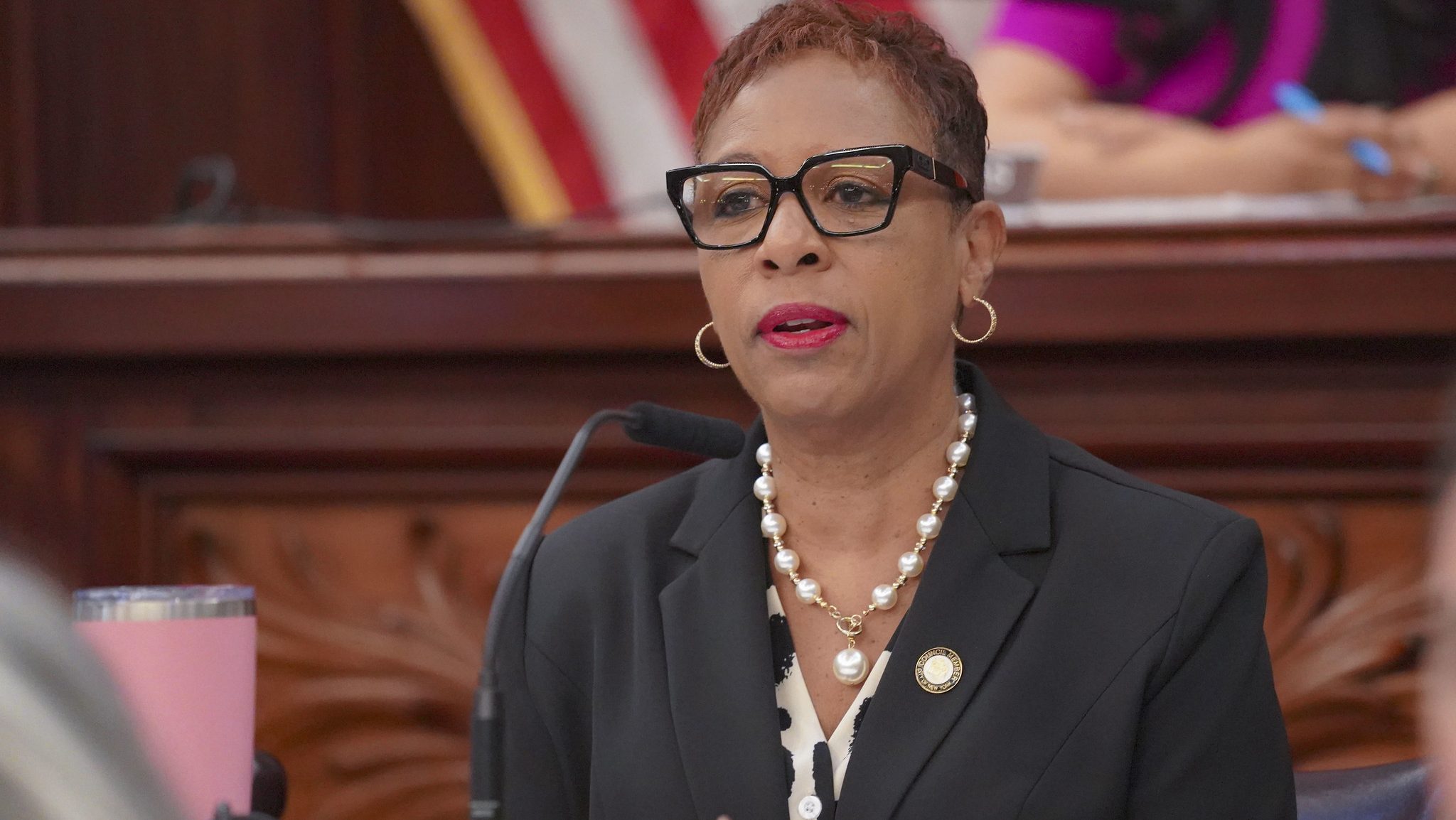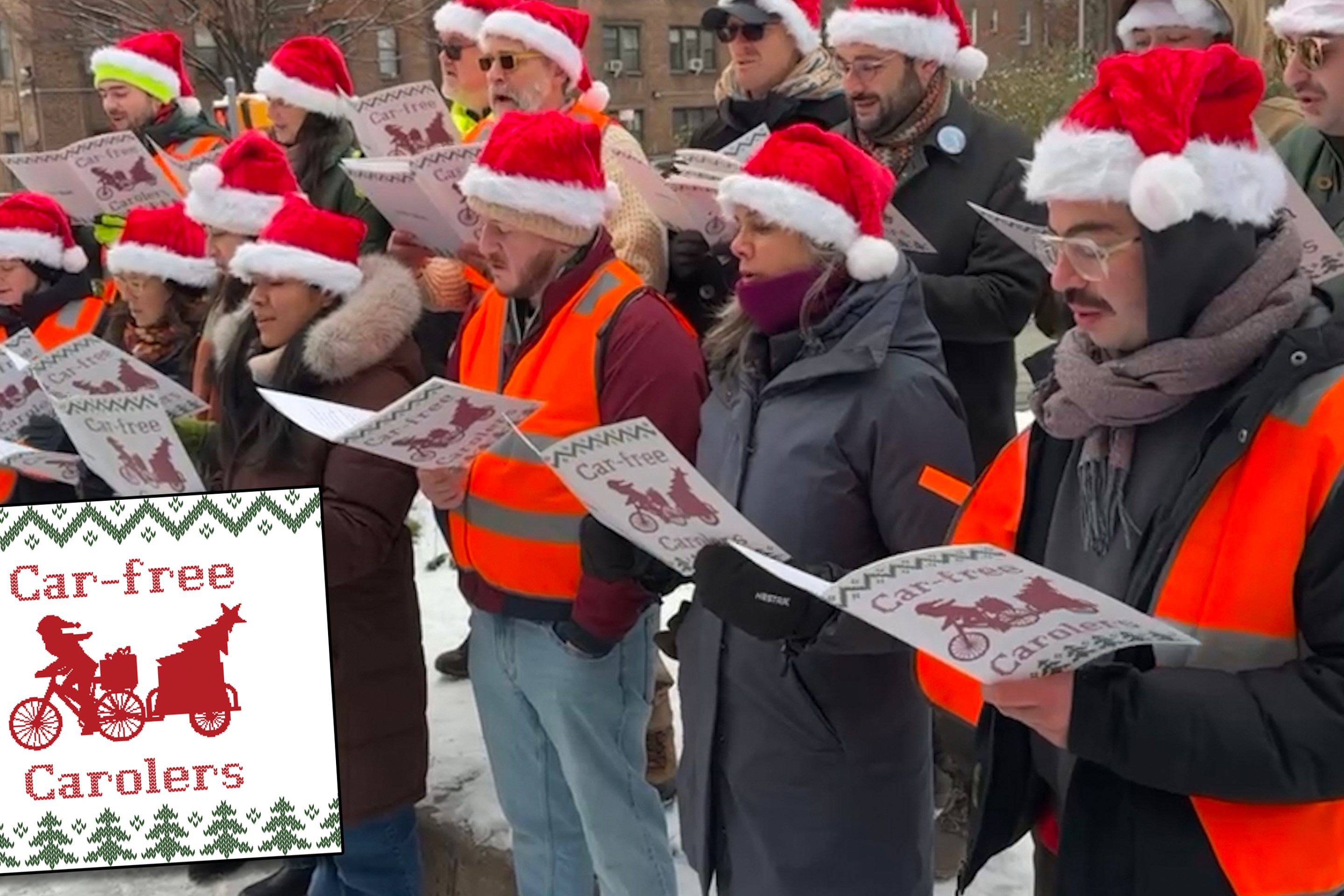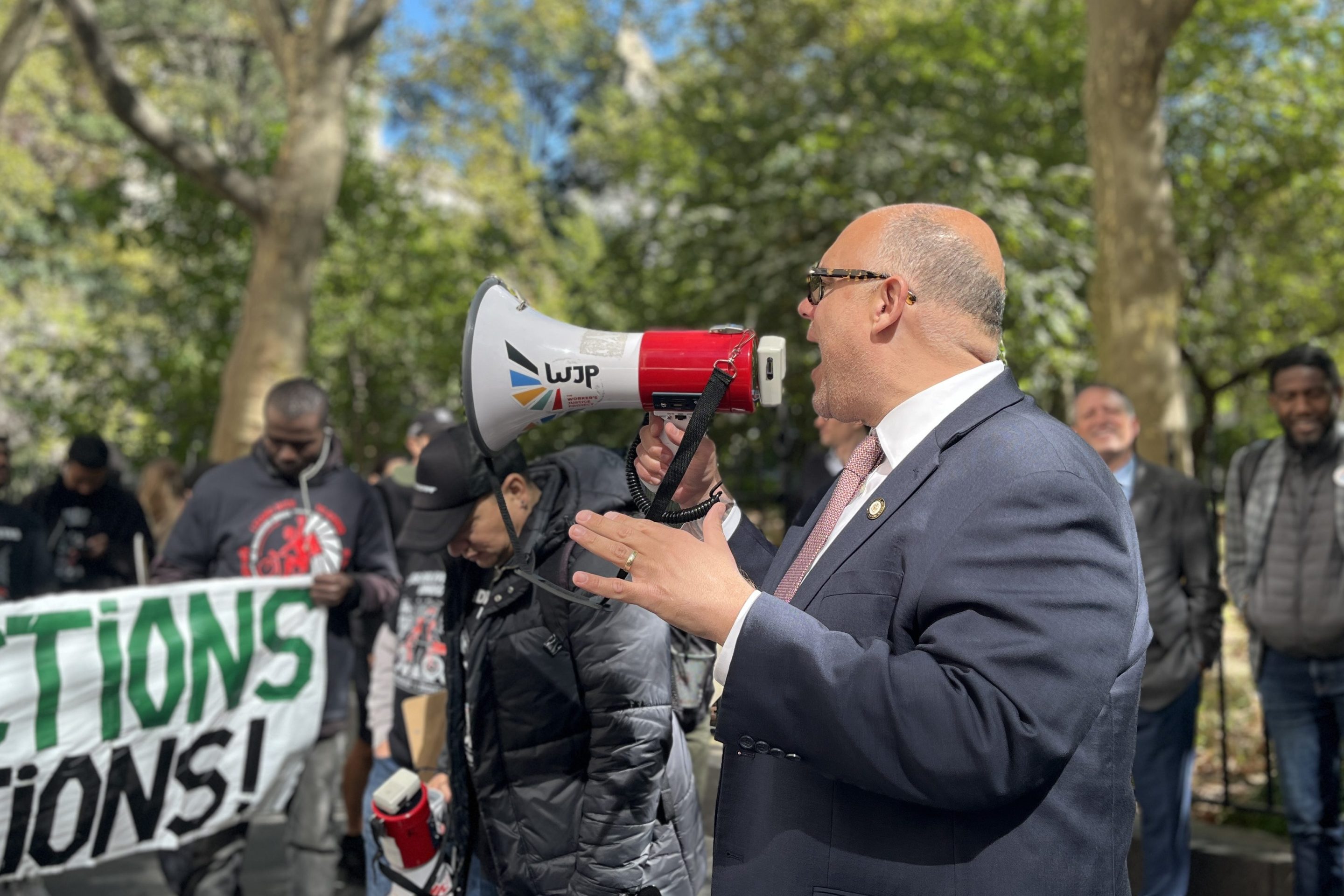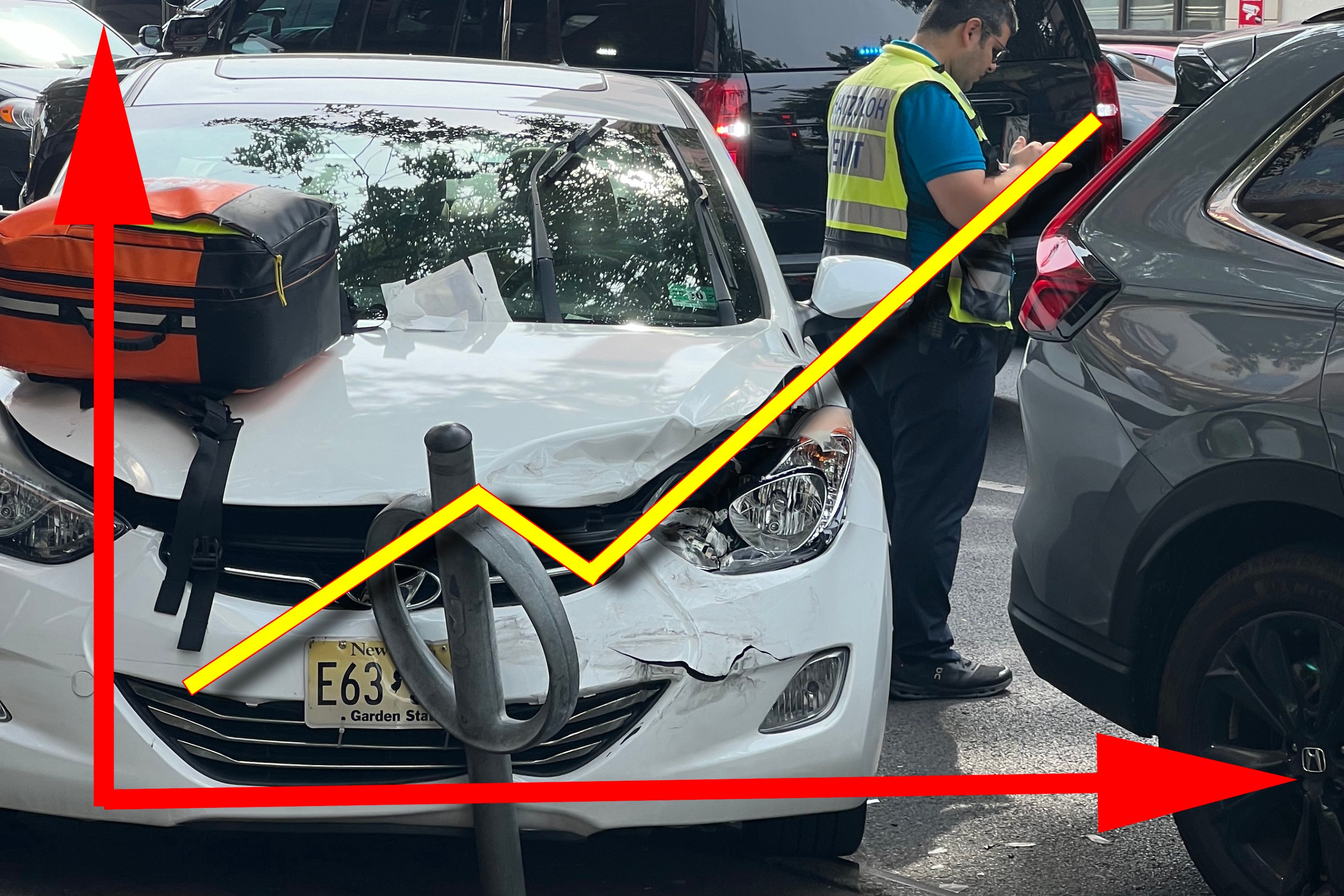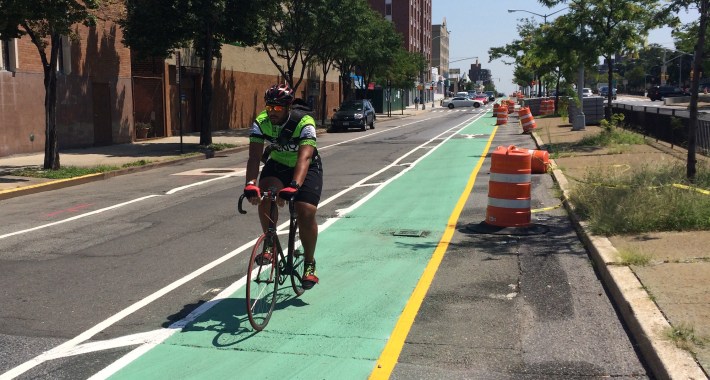
It's happening: DOT crews are putting down green paint and thermoplastic stripes along 1.3 miles of Queens Boulevard between Roosevelt Avenue and 73rd Street. The redesign is the de Blasio administration's most significant bike project to date and includes several pedestrian safety improvements as well. It was prompted by a long advocacy campaign for safer biking on the boulevard, which intensified after a driver struck and killed cyclist Asif Rahman in 2008.
Crews are working from west to east, adding a green bike lane, widening pedestrian medians, and installing crosswalks and signals for people walking between median islands. DOT has also closed off some of the high-speed "slip lanes" between the main roadway and the service streets. The remaining slip lanes will be redesigned to slow drivers exiting the boulevard's main lanes and crossing the bike lane.
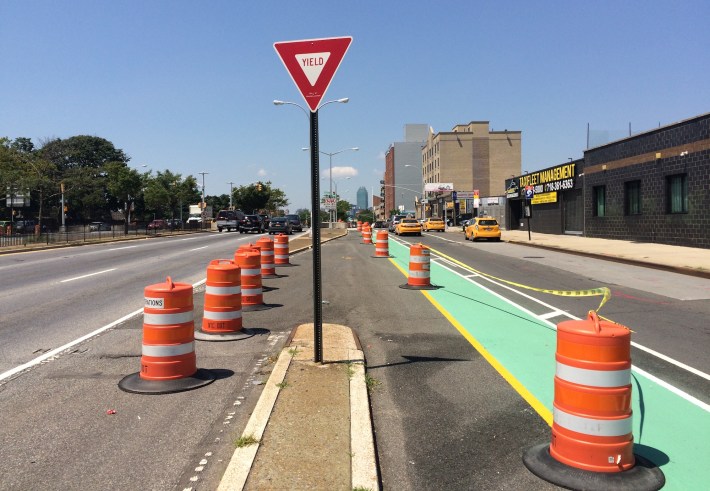
The Queens Boulevard redesign is an example of how DOT can use low-cost materials to act quickly, when decision makers treat a project as a high priority. Workshops were held in January. The design was revealed in March. The community board signed off in June. The mayor held a celebratory press conference in July. Now, in August, the first changes are on the ground.
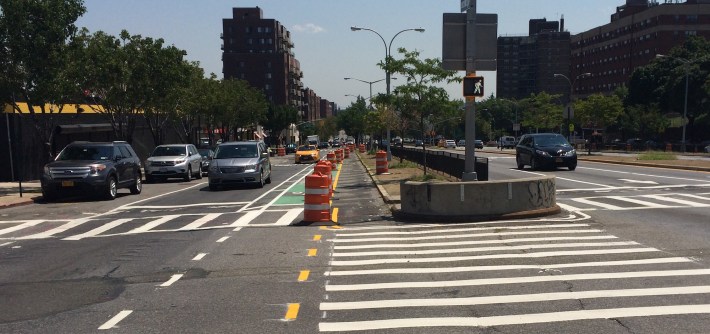
Additional work, including small concrete median extensions and finishing touches like flexible bollards along the bike lane, should be complete by October, Transportation Commissioner Polly Trottenberg said last month. The design will then be cast in concrete as part of a $100 million reconstruction of Queens Boulevard that begins in 2017.
DOT will turn its attention to sections of Queens Boulevard to the east later this year and early next year.


